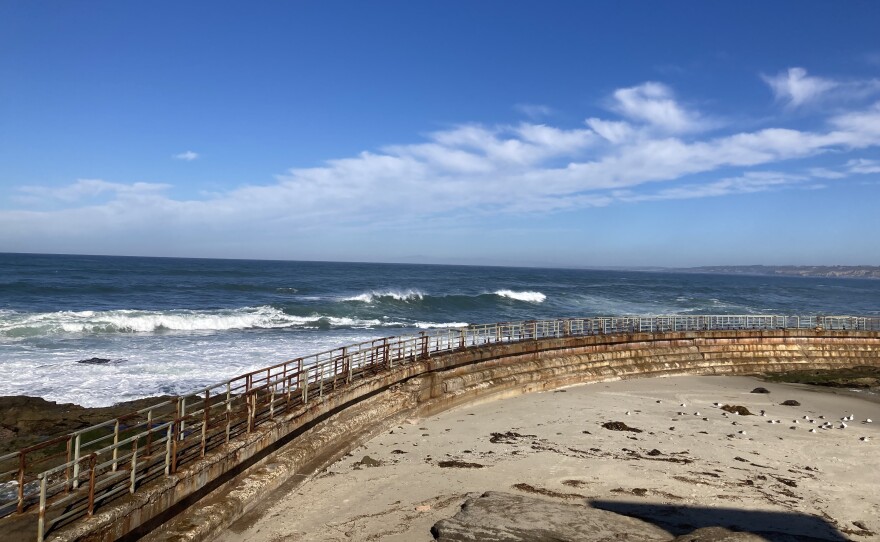San Diego got another taste of big ocean waves this week.
People gathered near the Children’s Pool in La Jolla to get a glimpse of rough surf and the seals sleeping peacefully on the pocket beach.
“Lots of beautiful waves that are coming in a nice formation,” said Beth Samous who was visiting from Annapolis Maryland. “And the waves are coming in and hitting the sea wall from the old pool.”
A young child, Austin Plamondon, took turns giggling and pointing at the waves and then the harbor seals.
The turbulent sea and clear blue sky brought plenty of tourists and locals to the sidewalks along the coast.
The waves were breaking well offshore but still hit the rocky coast with enough force to send sea spray into the air.
It was the second big wave event in less than a week.
This past weekend, waves damaged the Ocean Beach Pier as they washed over the structure and they also flooded the Mission Beach boardwalk, which is typically 100 yards from the water.
A warmer-than-usual ocean is lifting sea levels a bit, but the waves that are crashing into the San Diego coast actually originated on the other side of the Pacific Ocean.
“We have the El Niño storm activity in the Pacific that creates these long-period, powerful waves that cross the entire ocean and come to our coast,” said James Behrens of San Diego’s Coastal Data Information Program (CDIP). “On top of a somewhat elevated sea level and in combination with this, we were seeing some of the largest tidal swings of the year.”
A research buoy off the coast of San Pedro, in Los Angeles County, is part of CDIP’s global wave monitoring system. The device has been measuring wave action off the Southern California coast for 25 years.
“All of the biggest readings have been in the last year or so,” Beherns said.
The big swells seen this week are spectacular and somewhat rare, but they aren’t unprecedented.
Another El Niño in 1983 generated waves that pummeled the coastline in California.
“That was a winter when a lot of the structures along the west coast were damaged and a lot of sediment loss and transport erosion and so forth,” said Dan Cayan, a climate researcher at UC San Diego’s Scripps Institution of Oceanography.
A huge cyclone in the eastern Pacific Ocean pushed powerful waves into the California shore.

The waves were so fierce they pulled massive amounts of sand out to sea and destroyed a pier structure in Santa Monica.
“This winter is giving us a little sample of what can happen when you get systems like that, but so far, not to the extent that we saw that winter,” Cayan said.
The conditions that came together to create this winter’s wave events — a warmer ocean, higher sea level, high tides and Pacific storms generating wave energy — will likely happen more frequently as the climate continues to warm.
Cayan said that will put extra pressure on California officials who will have to deal with storms that damage coastal structures and erode both cliffs and beaches.







